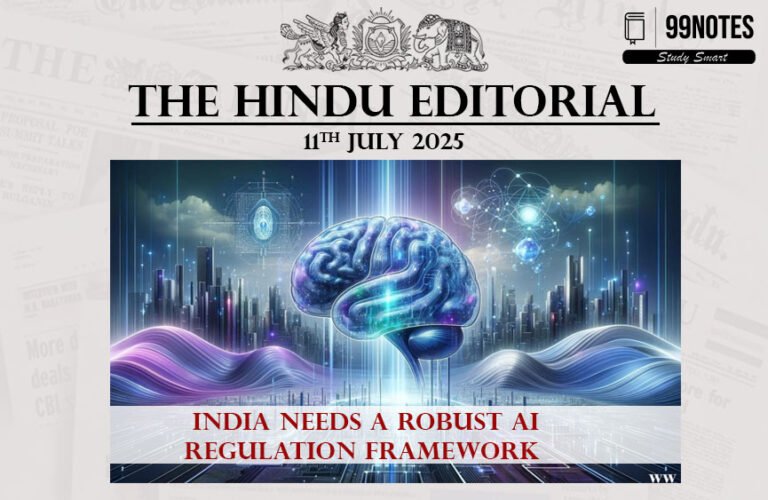20 December 2023 : The Hindu Editorial Notes PDF
The Hindu Editorial
20-December-2023
1. The deep import of the Article 370 verdict.
| Topic: GS2 – Indian Polity – Indian Constitution – Amendments UPSC relevance: Examines Supreme Court’s Jammu and Kashmir judgment, crucial for constitutional, security, and democratic implications in India. |
| Context: |
|
Background:
- Supreme Court judgment on August 2019 presidential orders discussed.
- Focus on implications for Jammu and Kashmir’s autonomy and division into Union Territories.
Key Points:
- Commentaries highlight impact on national issues, statehood, and presidential powers.
- Neglect of three crucial aspects: Ground impact, Court’s view on peace/security, and democratic implications.
On the Ground Impact:
- Varied reactions in different regions—ambiguity in Jammu, disappointment in Kargil, cautious welcome in Ladakh, and ominous sentiment in the Valley.
- Economic dispossession concerns in Jammu, majority Shia wishes in Kargil, and a desire for elected administration in Ladakh.
- Severe impact on the Valley, reinforcing a belief of resentment and silencing of Kashmiris’ voices.
Security Concerns and Court’s View:
- Draconian circumstances during President’s August 2019 orders not adequately acknowledged.
- Blanket acceptance of security concerns criticized; potential danger in unwarranted arrests and limiting policy debates.
- Neglect of the importance of peacemaking in resolving internal conflict.
Human Rights and Violence:
- Justice Kaul’s ‘epilogue’ acknowledges human rights abuses but overlooks violations since August 2019.
- Rise in violence post-2019 contrasts with the decline during the 2002-13 peace process.
- Lack of emphasis on the lesson that peacemaking offers a better solution to internal conflict.
Moving Forward and Blueprint:
- Suggestion for the Union administration to initiate a new peace process.
- Recommendations include restoring statehood, holding elections, and returning freedom of expression.
- Acknowledgment of potential anger and the need for compassionate responses.
- Reference to the A.B. Vajpayee and Manmohan Singh blueprint for disarmament, demilitarization, soft borders, and autonomy.
Concluding Thoughts:
- The Supreme Court’s Jammu and Kashmir judgment holds vast implications, urging a critical examination of its constitutional, regional, and security dimensions.
- The neglected aspects underscore the need for comprehensive reevaluation and future considerations.
| Article 370 |
Historical Presence of Article 370:
Present Status:
|
| Practice Question: Discuss the constitutional, regional, and security implications of the Supreme Court’s judgment on Jammu and Kashmir’s autonomy, emphasizing the neglected aspects. (250 words/15 m) |
2. Regulation of net world must address privacy concerns, simplify procedures.
| Topic: GS2 – Polity UPSC relevance: Telecommunications Bill, 2023 consolidates laws, streamlines procedures, and raises concerns over privacy and state authority – you can expect a mains question on these themes. |
| Context: |
|
Telecommunications Bill, 2023 Overview:
- Aims to consolidate laws for wireless networks and Internet service providers.
- 46-page statute maintains existing regulatory structures and simplifies bureaucratic procedures.
- Digitization of licensing processes and new mechanisms for non-compliance with license terms.
Local Authority Access:
- Telecom operators granted access to district- and State-level authorities for permissions and dispute resolution.
Satellite Internet Industry:
- Exempted from bidding for spectrum, aligning with global practices.
- Welcomed by industry bodies for streamlining regulations and promoting ease of doing business.
- Potential to provide regulatory stability for the next phase of telecom expansion in India.
Concerns and Challenges:
- Broad definition of telecom raises privacy and surveillance concerns.
- State authority implications for privacy and potential compromises in proposed solutions.
- Urgent need for transparent handling of public responses during consultation and rule-making processes.
- Subordinate legislation required for the Act’s provisions, emphasizing the evolving digital landscape since the 19th century.
Conclusion:
- The Telecommunications Bill, 2023, while streamlining regulations, poses challenges with privacy and state authority concerns.
- Transparent rule-making is crucial for its successful implementation amid evolving digital dynamics.
3. Tax ‘HFSS’ foods, view it as a public health imperative.
| Topic: GS2 – Social justice – Health UPSC Significance: HFSS taxation crucial for public health, aligning with global trends; addresses NCD burden, obesity, and economic impact. |
| Context: |
|
High Fat, Sugar, and Salt (HFSS) Consumption Impact:
- Major risk factor for health issues including obesity, diabetes, and high blood pressure.
- World Bank report (2019): 70% of overweight/obese people in Low- and Middle-Income Countries.
- NCDs burden in India increased from 38% (1990) to 65% (2019).
India’s Dietary Shift:
- Ultra-processed food sector CAGR: 13.4% (2011-2021).
- Alarming surge in HFSS consumption; India largest producer and consumer of sugar (2022).
- Sales of snacks and soft drinks exceeded $30 billion, indicating concerning dietary trends.
Health and Economic Implications:
- Non-communicable Diseases (NCDs) burden in India.
- Annual deaths in India: 1.2 million attributed to dietary risks.
- Economic impact of overweight and obesity: $23 billion (2017), projected $480 billion by 2060.
Global Fiscal Measures:
- Global trend follows using fiscal measures to combat obesity.
- Sugar-sweetened beverages (SSBs) taxed in 60+ countries.
- HFSS food tax in 16 countries including Denmark, France, Mexico, UK, and US.
Case for HFSS Tax:
- Market failures associated with HFSS consumption.
- Negative externalities: Societal costs, increased health-care expenditures.
- Internalities: Limited consumer understanding influenced by aggressive marketing.
Taxation Objectives:
- Incentivize industry reformulation for healthier products.
- Encourage people to prioritize healthier alternatives.
- Non-regressive and fiscally neutral design to make healthier choices more affordable.
GST and Nutritional Content:
- Current GST rates not aligned with nutritional impact of ultra-processed foods.
- Inconsistencies in taxing aerated beverages, juices, and salty snacks irrespective of nutritional content.
- HFSS taxation should be a public health imperative, promoting healthier food choices.
Benefits of Effectively Designed Taxes:
- Act as a deterrent to HFSS consumption.
- Prompt manufacturers to reformulate foods.
- Improve public health outcomes, reducing burden on health-care system.
- Combined with nutrition literacy and food labeling, a potent tool to combat overweight and obesity.
Conclusion:
- HFSS taxation is imperative to address health risks, combat obesity, and alleviate the economic burden.
- Designing non-regressive and nutrition-focused taxes is vital for fostering a healthier and sustainable food system.
| High Fat, Sugar, and Salt Foods |
|
| Practice Question: Discuss the rising burden of noncommunicable diseases (NCDs) in the context of developing countries. Highlight the key challenges and potential strategies for effective prevention and management. How can governments promote healthier lifestyles to curb the NCD epidemic? (250 words/15 m) |
4. India’s ethanol conundrum.
| Topic: GS3 – Indian Economy – Energy Security UPSC significance: Tests understanding of India’s energy transition challenges, food-fuel trade-offs, and sustainable development in policy decisions. |
| Context: |
|
Global Renewable Energy Pledge:
- Over 100 countries commit to tripling global renewable energy capacity by 2030 at COP28.
India’s Ethanol Blending Challenge:
- India struggles with its 20% ethanol blending target by 2025 due to low sugar stocks and sugarcane production shortfall.
Transition to Grains-Based Ethanol:
- Government plans a shift to grains-based ethanol, focusing on maize; NAFED and NCCF authorized for procurement.
Food-Fuel Conflict Concerns:
- Ethanol production from corn raises concerns about a food-fuel conflict, impacting food prices linked to crude oil prices.
- Differential pricing in India led to reduced sugar stocks; corrective ban on using cane juice for ethanol issued in December 2023.
Potential for Food Inflation:
- Shifting to grains-based ethanol to meet targets may pose a risk of uncontrollable food inflation.
Delicate Trade-Off in India’s Renewables Strategy:
- India faces a delicate trade-off between intensifying hunger and reducing fossil fuel use in its renewables strategy.
Consideration and Alternatives:
- Options include reconsidering ethanol blending targets, investing in public infrastructure, urban design, and promoting renewable energy like solar power.
Conclusion:
- India’s pursuit of renewable energy and ethanol blending targets requires careful navigation to avoid food-fuel conflicts and inflation.
- Balancing sustainability and energy goals is crucial for a resilient future.
| Ethanol Blending with Petrol. |
Challenges:
Way Forward:
|
| Practice Question: Examine India’s challenge in achieving ethanol blending targets and the potential trade-offs with food security. Discuss sustainable solutions. (150 words/10 m) |
For Enquiry

20 December 2023 : The Hindu Editorial Notes PDF

20 Dec 2023 : Daily Current Affairs

20 Dec 2023 : PIB

UNICEF Full Form: United Nations’ Child Protection Arm

IMF Full Form Explained: A Global Financial Institution

CRZ full Form and What it is? Complete detail about CRZ

19 Dec 2023 : Daily Quiz

Full Form of BRICS, History and it’s Importance for India

15th Finance Commission Recommendations Notes for UPSC

19 Dec 2023 : Daily Answer Writing
December 2023 The Hindu 20 December 2023 : The Hindu Editorial Notes PDF The Hindu Editorial
20-December-2023
1. The deep import of the Article 370 verdict.
Topic: GS2 – Indian…
Daily Current Affairs 20 Dec 2023 : Daily Current Affairs Daily Current Affairs
20-December-2023
1. Karnataka to reduce burden of school bags by 50%.
Topic:…
December 2023 Pib 20 Dec 2023 : PIB PRESS INFORMATION BUREAU
20-December -2023
1. Soil Health Management and Soil Health Card Schemes
Topic:…
Full Form UNICEF Full Form: United Nations’ Child Protection Arm UNICEF Full Form
The full form of UNICEF is the United Nations Children’s Fund. The United Nations International…
Full Form IMF Full Form Explained: A Global Financial Institution IMF Full Form
The full form of IMF is the International Monetary Fund. It was established as an international…
Full Form CRZ full Form and What it is? Complete detail about CRZ CRZ Full Form
Full form of CRZ is “Coastal Regulation Zone”. It deals with proper management and regulation…
Daily Quiz 19 Dec 2023 : Daily Quiz 19 Dec 2023 : Daily Quiz…
Full Form Full Form of BRICS, History and it’s Importance for India BRICS Full Form:
Full form of BRICS is Brazil, Russia, India , China , and South Africa. Initially it…
Articles 15th Finance Commission Recommendations Notes for UPSC The 15th Finance Commission was formed under the provisions of Article 280 to recommend the devolution…
mains answer writing 19 Dec 2023 : Daily Answer Writing Mains Answer Writing
19-December-2023
Q1) With help of a neat diagram, describe the general atmospheric…


